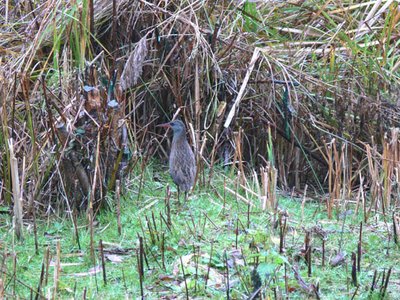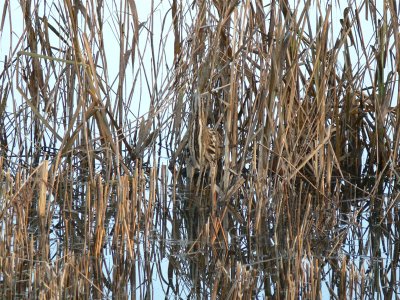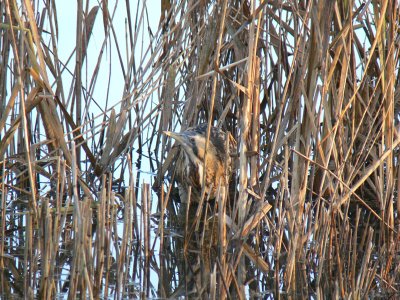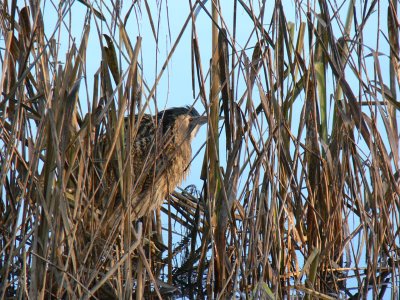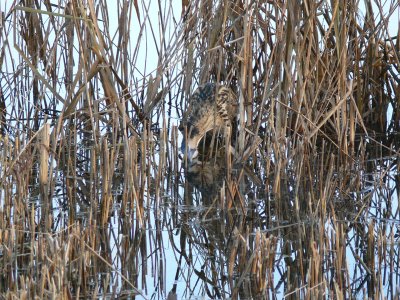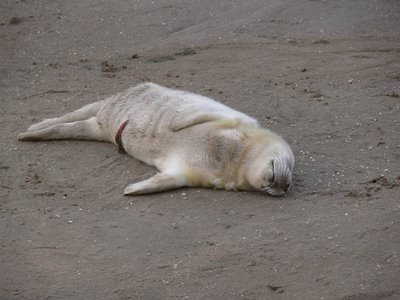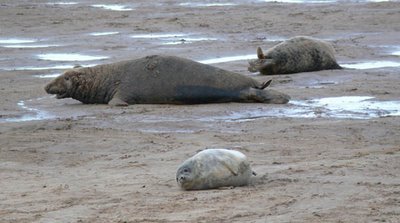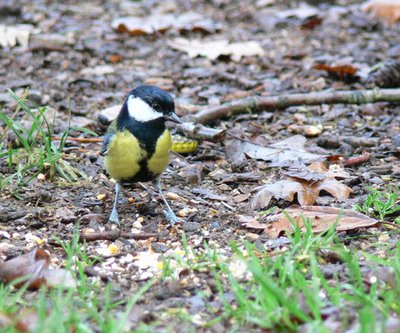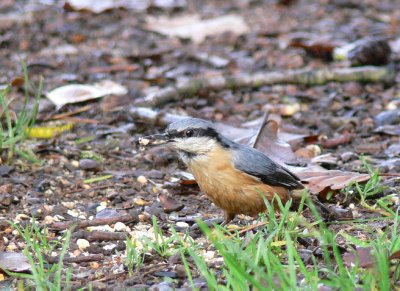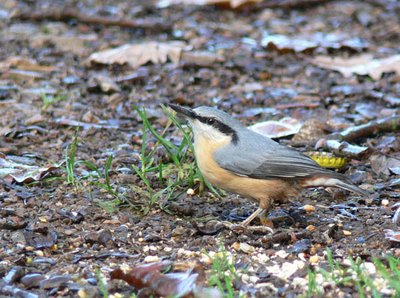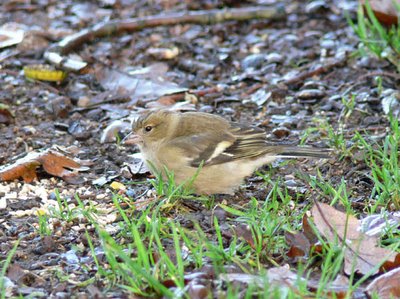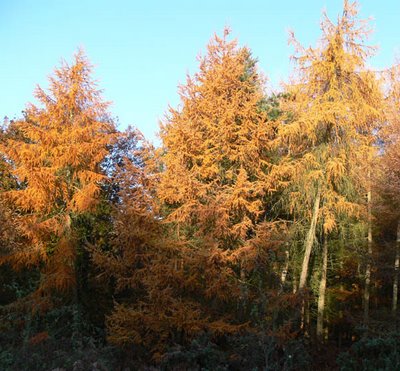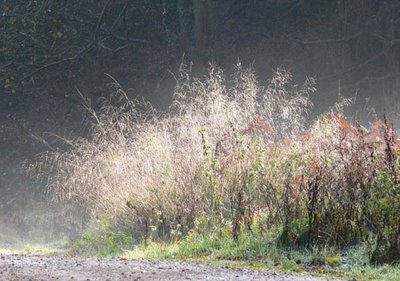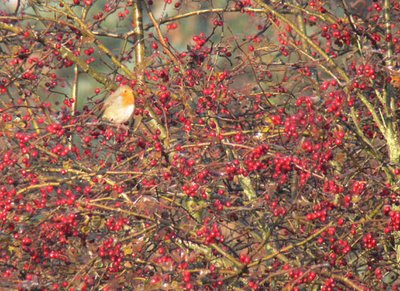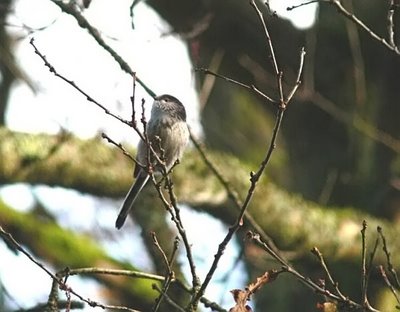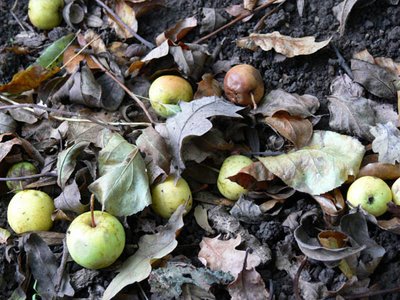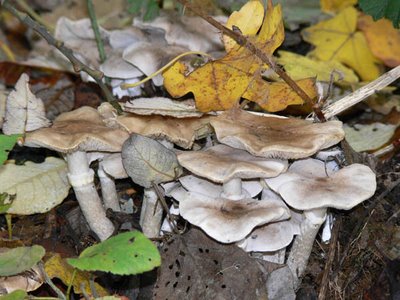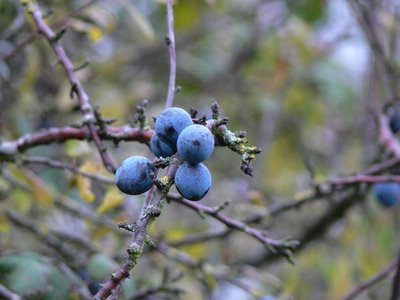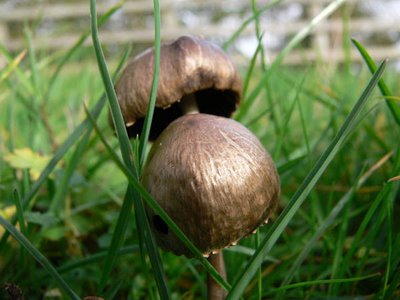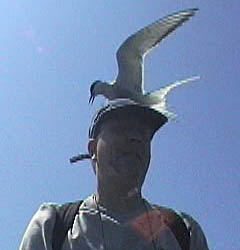Thursday, December 28, 2006
Little things can brighten the day
a dunnock and another nuthatch in the Forest of Dean (this time without the bottle top)
and yet another robin on a picnic table (well ........ it's Christmas. Did you know robins were reputedly associated with Christmas because postmen wore red coats at the time Christmas cards took off commercially in the 1860's? Birds Britannica - can I plug that book again - has other suggestions, including the fact that the robin has such a conspicuous winter song at a time when there is such little competition)
Monday, December 25, 2006
Christmas came early ......
A dull day was lightened when the warden told me a water rail had been showing at a feeding station near one of the hides, so I went and camped there for a couple of hours.
First visits were from the usual suspects
but then the first of the new birds for me appeared
After some discussion it was agreed this was probably a female golden pheasant, and a look at my books would seem to confirm this. Far from the right habitat though.
Then the moment I had been waiting for
I have heard the squealing cry of water rails many times at Newport Wetlands, but this was my first clear view. Although shy it did eventually venture out into the open a bit more.
Sad though I was to miss the chance of leafing through M&S leftovers (!) the visit had been a good choice. However there was another bird they told me was around which left me wanting more.
But that can wait .............
Walking the dog at Clumber Park provided some fair views of shy goosanders
and better ones of the local ducks. In my experience to date a close contact with tufted duck is rare, so it was pleasing to get this shot, whilst the mallard and coot were just sort of cute.
In the light of what I had been told at Potteric Carr I persuaded Kay our journey home could be postponed until later in the day giving me chance to return to try my luck.
Initially the herons in view were all of the standard grey variety.....
but then I went into a hide to find a guy gesticulating furiously for me to be quiet and move slowly. It took me a liitle while to spot the target of my return visit, demonstrating the reason for the bird's plumage and behaviour - even though it is centre of the frame you might find youself doing a double take before you pick it out. If you still don't get it click on the picture for a larger version.
But there was no doubt - a sky pointing bittern just a few yards away. I then had the pleasure of watching it for about half an hour, even fishing, sliding it's beak through the reed stems in a quite creepy way, although I didn't see it catch anything. Brilliant - a bog bumper at last. You can click on the photos if you want to see slightly larger versions.
Thursday, December 21, 2006
Donna Nook Seal Rookery
One of the first pups we saw was this one - obviously fairly new to the world, but, slightly worryingly, by itself.
Older pups had assumed what could only be described as football shapes, and were more than happy to watch passing visitors. (I should point out that the Adidas bag is not what Kay has to use as a handbag, but is what I carry my camera kit in!). They are only suckled for 2-3 weeks, then abandoned to get on with it - eventually hunger will drive them down to the sea. Their growth rate is phenomenal - a newborn doubles it's weight in the first week, and loses the white coat a couple of weeks later
The adult males were more sparse on the ground, but quite intimidating, reaching 230kg in weight, 2 metres in length.
Perhaps not the clearest picture but this is seal pornography with next years pup being conceived. Try not to stare! Often takes place in shallow water, but also does occur on the beach.
Sadly, but inevitably, not all the pups made it, and we saw this one being eyed up by a Lincolnshire pied vulture.
It got us a bit worried again about the little newborn, but fortunately by the time we got back to it a mother had appeared and it had resumed it's quest to become a football.
When we were at Donna Nook the 1,000th pup of the year had been born, giving an idea of the numbers involved at this fabulous site owned by the MOD (they stop bombing practice in the breeding season), and run by The Lincolnshire Trust. If you get the chance to go in Novemeber or December take it - you will not be disappointed.
PS It is not all rosy for Britain's 110,000 grey seals. BBC Wildlife magazine (December) reports that about 5,000 are thought to be culled by fishermen each year. Legal restrictions still allow seals in the vicinity of fishing gear to be shot. There is no requirement for evidence of damage, and vicinity is not defined. Five grey seals, 4 pregnant females were recently shot dead at Point of Vastray in Orkney.
Thursday, November 30, 2006
Nut Warblers and a scaly legged finch
I had noted last week that they would come down to seed on the ground, but they would tend to grab a single peanut and shoot off. Instead I took some environmentally friendly 'won't grow' seed in the hope they might hang around a while longer.
Another misty morning welcomed by a pair of crows, and I started to worry about the light levels. This wasn't going to be easy!
I started off tucked back under the trees, using the telescope to try and get a decent frame filling digiscoped shot. The excellent sensor on the fuji 30 allowed pictures at low light levels, but focusing proved tricky, and there was some definite purple fringing.
I decided to see how brave the birds were and was amazed to find I could get within a few yards and the birds would still feed. Admittedly I was tucked up in my coat under a hood, but even so their tolerance was a surprise - such a surprise that I didn't take in the bottle top that unfortunately inhabits some of the shots! Even more surprising was the number of people walking past who only seemed to notice me at the last minute, ofetn as they were standing on the seed!
The seed worked well, with the nuthatches pausing to pick up several sunflower seeds most times - helpful given the fact that they tend to move so fast and the light was still pretty poor.
Ended up with a couple of shots I was happy with, including the scaly legged chaffinch - I believe this is due to a mite infestation. It looked bad, but the bird itself seemed fairly healthy otherwise.
Tuesday, November 21, 2006
Goldcrests and cliches
And to take some cliche snaps. I won't apologise about the lack of originality because I still think they look pretty!
A large clump of Deschampsia highlighted by the sun reminded me why I persist in trying to grow this grass in the garden, even though it doesn't seem I've found the right spot yet.
I missed the redwings on the hawthorn, but a robin sat like an overlarge berry.
A movement in the treetops eventually turned out to be a greater spotted woodpecker, although I could only get decent views with the camera digiscoping at too high a magnification. Never seen one on pine cones before.
Long tailed tits flitted noisily through the broad-leaved trees and there were some fleeting glimpses of goldcrests in the pines, in too much shade to allow a shutter speed fast enough to freeze the flighty little buggers.
Moving on to Speech House and the arboretum I found more goldcrests, and finally managed a shot which at least has the beak almost in focus even if the rest is blurred and you can't see the crest!
I don't know if it is just me but this year there seem to be goldcrests everywhere I go - even in the car park at work - far more than I can recall last winter. Maybe a sign of a hard winter coming for Europe?
Monday, November 13, 2006
Autumn II
[Click on the pics for slightly bigger versions]
Woodland
A trip back to Wentwood, this time with some seed to try and tempt down the chaffinch flock, reputed to include a few bramblings. Couldn't tempt them down to the ground, and saw only chaffinches in the trees. The robin was happy enough though, finding some seed on the old picnic table.
Hedgerow
Farmland






